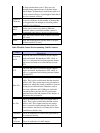Components Used
This document is not restricted to specific software and hardware versions.
Conventions
Refer to Cisco Technical Tips Conventions for more information on document conventions.
Background Information
Purpose
This document discusses how to troubleshoot these issues:
Autonegotiation•
Physical Connectivity•
Port Errors (Data Link Errors)•
Continuous Link Up/Down Situations•
Gigabit Port Configuration•
Common Catalyst Switch Software Issues•
Common NIC Issues and Resolutions•
When you troubleshoot NIC issues with Catalyst switches, the first step is to verify that the issue is not related
to a possible configuration issue with the Catalyst switch. For useful information that pertains to common
connectivity issues with the configuration of the Catalyst switch, refer to these documents:
This document addresses initial connectivity delays that occur when workstations connected to
Catalyst switches are unable to log in to a network domain (Microsoft Windows NT or Novell), or are
unable to obtain a Dynamic Host Configuration Protocol (DHCP) address, due to the Catalyst switch
configuration. The first step in order to troubleshoot these scenarios is to confirm that the switch
configuration is correct, as shown in Using PortFast and Other Commands to Fix Workstation Startup
Connectivity Delays.
•
Excessive data link errors cause ports on some Catalyst switches to go into an errdisabled state.
Recovering From errDisable Port State on the CatOS Platforms describes what the errdisable
state is, explains how to recover from it, and provides two examples of recovery from this state.
•
Why Do Autonegotiation and Compatibility Issues Exist?
Autonegotiation issues can result from nonconforming implementation, hardware incapabilities, or software
defects. When NICs or vendor switches do not conform exactly to the IEEE specification 802.3u, problems
can result. Hardware incompatibility and other issues can also exist as a result of vendor−specific advanced
features, such as autopolarity or cable integrity, which are not described in IEEE 802.3u for 10/100 Mbps
autonegotiation. Generally, if both the NIC and the switch adhere to IEEE 802.3u autonegotiation
specifications and all additional features are disabled, autonegotiation must properly negotiate speed and
duplex, and no operational issues exist.
General Troubleshooting for 10/100/1000 Mbps NICs
Autonegotiation Valid Configuration Table
Speed determination issues can result in no connectivity. However, issues with autonegotiation of duplex
generally do not result in link establishment issues. Instead, autonegotiation issues mainly result in


















